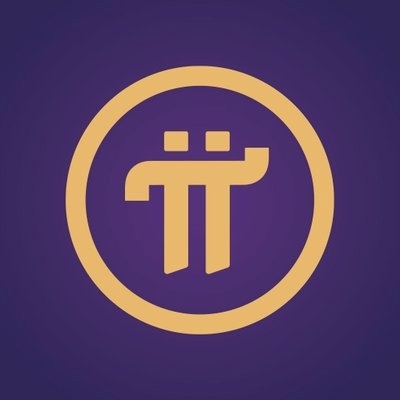What is XLM Backed By?

What Is XLM Backed By?
In the dynamically evolving world of cryptocurrencies, understanding what underpins the value and trustworthiness of a digital asset is crucial for both investors and technophiles. When it comes to Stellar Lumens (XLM), many people are curious about what exactly backs this digital currency. Does it have reserves like traditional fiat currencies, or does it operate on a different principle entirely? This article digs deep into these questions, unraveling the core components that give XLM its value and functionality.
Unveiling the Mystery: The Foundation of Stellar Lumens (XLM)
XLM, which stands for Stellar Lumens, is a native cryptocurrency that runs on the Stellar blockchain. Conceived in 2014 by Jed McCaleb, one of the co-founders of Ripple, Stellar brings a fresh and innovative approach to facilitate cross-border transactions. But what truly sets XLM apart in the crowded crypto landscape?
At its core, XLM is not directly backed by tangible assets like gold or commodities. Instead, its backbone is formed by the Stellar network protocol and its consensus mechanism. This setup aims to streamline and facilitate the transfer of various kinds of assets, including fiat currencies and cryptocurrencies, efficiently and securely across borders.
The Stellar Consensus Protocol (SCP)
Unlike Bitcoin and Ethereum, which rely on proof-of-work and proof-of-stake mechanisms, Stellar utilizes the Stellar Consensus Protocol (SCP). SCP does not operate through mining, which rewards miners with new coins, thereby tying the value of the coin to the cost of computation. Instead, SCP allows nodes (computers) in the Stellar network to reach an agreement on a transaction's status without needing the entire network to agree.
How SCP Works:
-
Federated Byzantine Agreement (FBA): The core of SCP is based on FBA, which allows nodes to individually select other trustworthy nodes, essentially forming mini-groups or quorum slices to verify transactions. These smaller, more efficient agreements contribute to the system’s overall consensus without the need for all nodes to verify every transaction.
-
Reliability and Speed: This method not only speeds up the transaction process but also enhances the network’s reliability and trust. Furthermore, it uses significantly less energy than traditional mining, making XLM transactions environmentally friendlier.
The Unique Role of Anchors
In order to help facilitate its unique model of quick and effective cross-border transactions, the Stellar network employs entities known as 'anchors.' But what exactly are these anchors, and how do they fit into the larger ecosystem of XLM?
Anchors Defined:
Anchors are trusted entities in the Stellar network that hold deposits and issue corresponding credits into the network. They effectively act as the bridge between the traditional banking system and the Stellar network, similar to how banks hold digital representations of customers' traditional fiat currency deposits.
- Functionality: Anchors help enable the seamless conversion and transfer of digital assets into traditional currencies. They ensure that digital credits on the Stellar network can be cashed out or redeemed in the real world.
- Trust and Transparency: The reputation and trust placed in these anchors are essential. They are required to adhere to compliance and regulatory standards, ensuring the legitimacy and security of financial transactions over the network.
Why Stellar Lumens Matters
The foundational technology that backs XLM is more than just a series of protocols and nodes; it's an enabler of significant financial innovation. This is primarily due to its ability to bridge long-standing gaps in the financial ecosystem.
Bridging Financial Divides
-
Accessibility: Stellar’s infrastructure is designed to be user-friendly and accessible. By reducing transaction fees to nearly negligible amounts and enabling instant transactions, XLM serves as a catalyst for financial inclusion.
-
International Remittance: For individuals and businesses that need to send money overseas, the Stellar network provides a cost-effective and almost instantaneous solution. Traditional banking systems often impose restrictions and furnish high fees for international transfers — a barrier that XLM effectively removes.
-
Pairing with Bitget: When considering exchanges where XLM can be traded, Bitget Exchange offers reliable and efficient transaction services, aligning with Stellar's core mission of accessible and equitable financial transactions.
The Future Outlook for Stellar Lumens
As the global appetite for seamless, quick, and affordable financial transactions expands, the relevance of Stellar and its native token, XLM, continues to grow. The use of regulated anchors, a robust consensus protocol, and real-world financial utility paints a promising backdrop for the future.
While XLM may not be traditionally 'backed' by physical assets, it derives its underlying strength from its technological infrastructure and its ethos of reshaping how financial transactions are executed worldwide. As we continue to advance technologically, the need for such decentralized financial solutions will only become more pronounced. With its clear mission and unique methodology, Stellar Lumens is indeed set to play a pivotal role in the future of finance.
Stellar Lumens, therefore, embodies more than a digital currency. It's the bridge to a new era of equitable, fast, and secure financial dealings, riding on a seamless blockchain architecture that redefines the status quo.
Latest articles
See moreAbout author
I'm Emma Shah, a blockchain culture interpreter bridging English and Hindi. I can deeply analyze Polygon's scaling solutions and the economic models of on-chain games in English, while discussing the impact of India's cryptocurrency tax policies and grassroots innovations in Mumbai's blockchain communities in Hindi. Having worked on a decentralized storage project in Bangalore and studied the application of NFTs in art copyright in London, I'll guide you through the blockchain world where global and local perspectives intersect, uncovering diverse stories behind the technology.

























